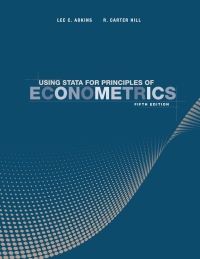This book is a supplement to Principles of Econometrics, 5th Edition by R. Carter Hill, William E. Griffiths and Guay C. Lim (Wiley, 2018), hereinafter POE5. This book is not a substitute for the textbook, nor is it a standalone computer manual. It is a companion to the textbook, showing how to perform the examples in the textbook using Stata Release 15. This book will be useful to students taking econometrics, as well as their instructors, and others who wish to use Stata for econometric analysis.
چکیده فارسی
این کتاب مکمل اصول اقتصاد سنجی، ویرایش پنجم از R. Carter Hill، William E. Griffiths و Guay C. Lim است (وایلی، 2018)، از این پس POE5. این کتاب نه جایگزین کتاب درسی است و نه یک کتابچه راهنمای کامپیوتر مستقل. این کتاب همراهی با کتاب درسی است و نحوه اجرای مثالهای کتاب درسی را با استفاده از Stata Release 15 نشان میدهد. این کتاب برای دانشآموزانی که اقتصاد سنجی میخوانند، و همچنین مربیان آنها و سایر افرادی که مایل به استفاده از Stata برای تجزیه و تحلیل اقتصادسنجی هستند، مفید خواهد بود.< /p>
ادامه ...
بستن ...
Using Stata for Principles of Econometrics
By: Lee C. Adkins; R. Carter Hill
- Publisher: Wiley
-
Print ISBN: 9781119502180, 1119502187
Print ISBN: 9781119502180, 1119502187
-
eText ISBN: 9781119463245, 1119463246
eText ISBN: 9781119463245, 1119463246
- Edition: 5th
- Copyright year: 2018
- Format: Fixed
ادامه ...
بستن ...










